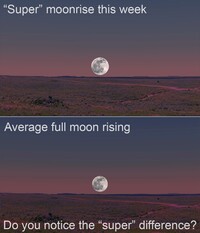Week of November 2-8, 2025
How far is the moon?
I'll bet that many of my readers know the answer; we all learned it in school. In fact, I still recall reciting it in fifth grade: "The moon is 240,000 miles from Earth."
What the teacher never told us, however, is that this number is just a rough average, and that there is no single answer. That's because the moon doesn't orbit the Earth in a circular path; if it did, its distance would always be the same. It orbits, instead, along an elliptical path, and its distance from us changes throughout its monthly cycle.
Scientists can measure the moon's exact distance by bouncing a laser beam from reflectors installed on the moon decades ago by Apollo astronauts. What do I mean by the moon's "exact distance"? Well, these laser ranging measurements can yield the lunar distance to an accuracy of less than 2 millimeters or one-thirteenth of an inch!
To most of us, however, that's overkill. We simply enjoy watching the moon as it lights our nighttime sky and, on Wednesday, Nov. 5, we'll have a great opportunity to see a unique full moon rise in the east at dusk. On that evening, the moon will lie very near its perigee position (its closest orbital point to our planet), only about 221,726 miles away, so you may notice that it appears slightly larger than normal. It will, in fact, be the closest, brightest and largest-appearing full moon of 2025.
This lunar perigee occurs every month, of course, but when it happens to coincide with a full moon we frequently hear folks call it a "super moon." Nothing terribly "super" about it, really. On that evening, the moon will appear only 7% larger than an average full moon, and this isn't terribly much. Imagine leaving a 7% tip to a restaurant server. ... Do you suppose they'd get excited and exclaim, "Oh, what a super tip!"? It's doubtful!
Even regular moon-watchers may struggle to notice the size difference, but keep in mind that some of the moon's "hugeness" you see may be caused by a confused brain trying to sort through what we call the moon illusion.
When the moon appears near the horizon, our brain interprets it as being farther away and, therefore, expects that its image on our retinas should be smaller. Since its image is not smaller (because the moon is not actually farther) the brain assumes that the moon must have grown in size, and very effectively shows us a larger moon.
Check out the moon again later in the evening when it lies high overhead and you'll see that it now appears a bit smaller. Of course it isn't; it's just that when it lies high in the sky, there's no horizon in the foreground to help our brains create the illusion, and the moon appears to be a normal size once again.
Be sure to mark your calendars for Wednesday, Nov. 5, and get out after sunset to watch the full moon ascend over the eastern horizon. Whether or not you see it as larger, the rising full moon is always stunning!
Visit Dennis Mammana at dennismammana.com. To read features by other Creators Syndicate writers and cartoonists, visit the Creators Syndicate website at www.creators.com.
The closest, brightest Moon of the year will appear on Wednesday, Nov. 5.







View Comments